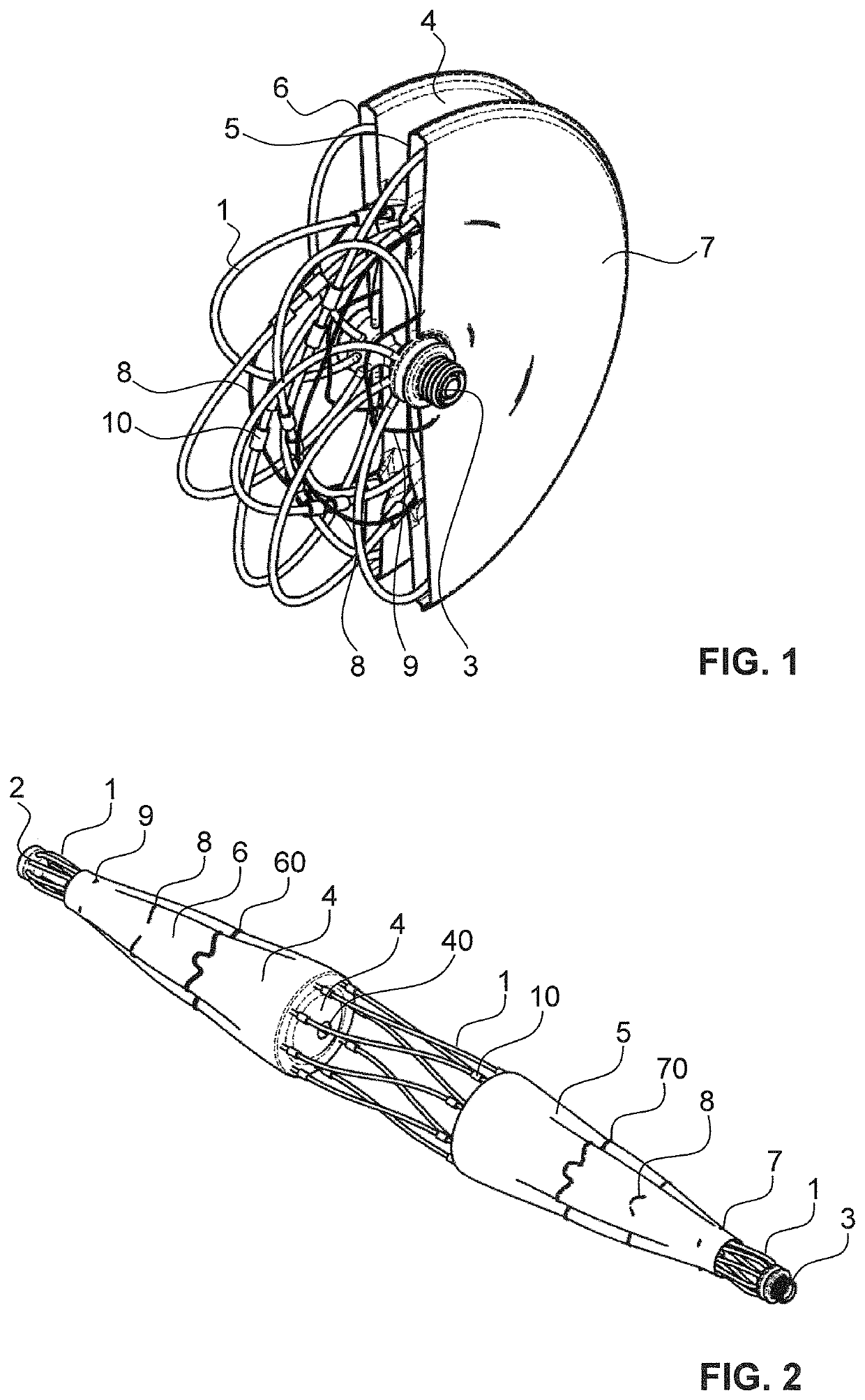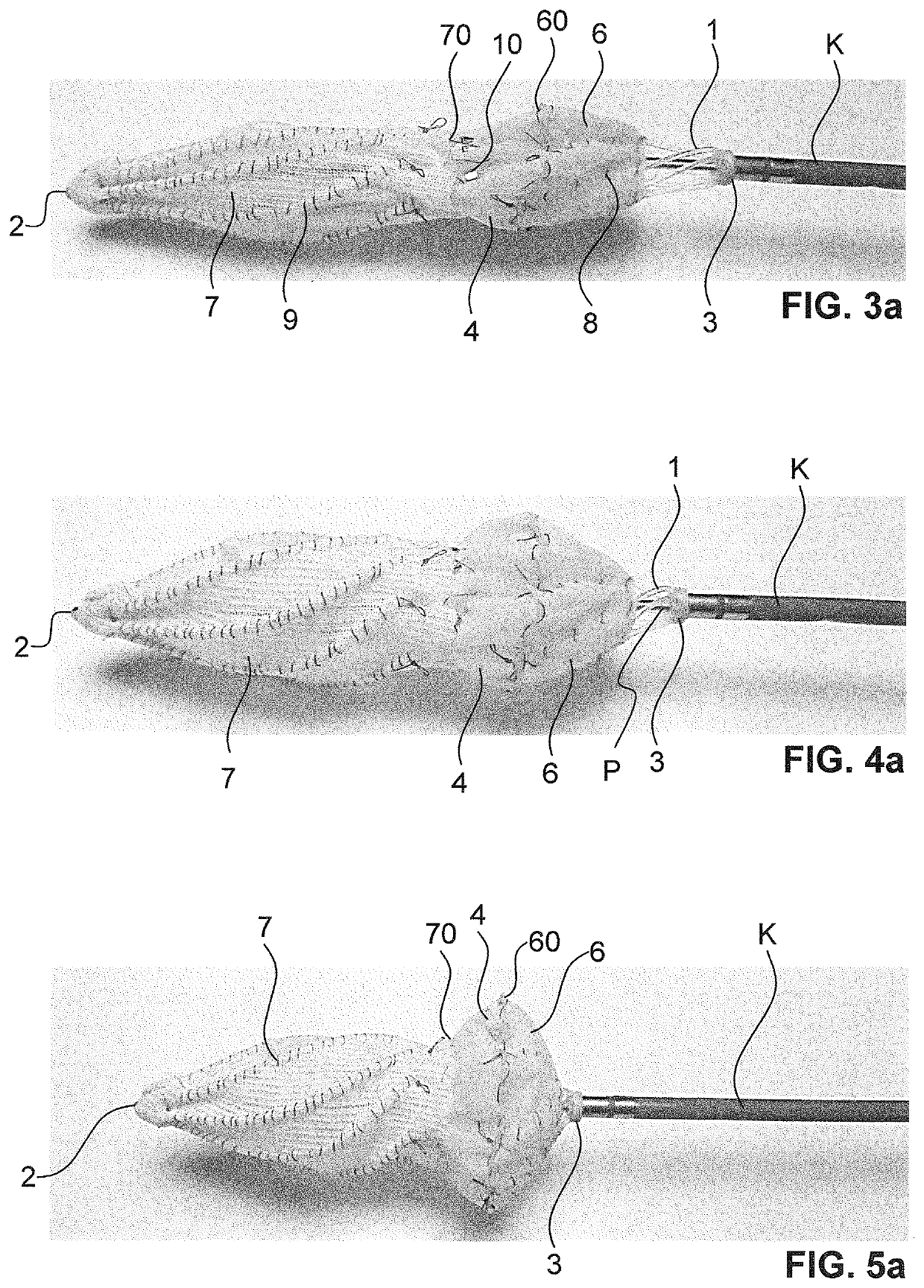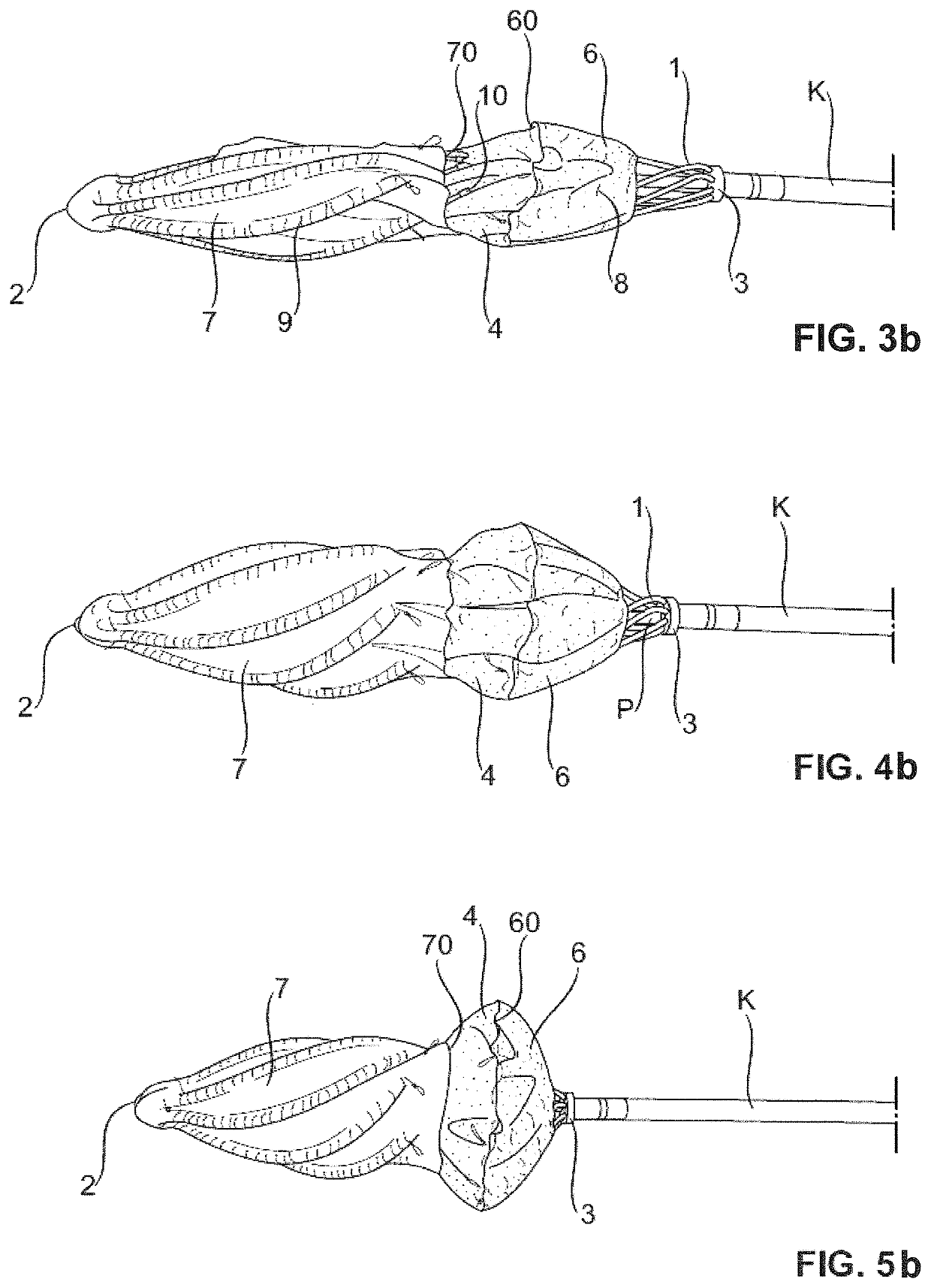Occluder
a technology of occluder and spondylosis, which is applied in the field of occluder, can solve the problems of destroying the tissue when placing the occluder, affecting the circulation of the affected organ, and affecting the sizing and shaping of the occluder, and achieving the effect of reducing the risk of tissue damag
- Summary
- Abstract
- Description
- Claims
- Application Information
AI Technical Summary
Benefits of technology
Problems solved by technology
Method used
Image
Examples
first embodiment
[0092]FIGS. 3 to 7 show an inventive occluder especially capable to be used for closing a left atrial appendage (LAA). The expanding structure is the same as described above. It comprises a multiple of thin elongate members 1, wherein each elongate member 1 is attached or held with one end in the first holder 2 and with the other end in the second holder 3. Preferably, the occluder comprises 3 to 10 elongate members 1, most preferably 8 elongate members.
[0093]The first holder 2 is a distal holder, the second holder 3 is a proximal holder. Preferably, both holders 2, 3 include markers for X-ray guidance. For example, the first holder 2 includes a Phynox-nut and the second holder 3 includes a PtIr-marker. The elongate members 1 are preferably made of resorbable PLGA filaments.
[0094]The occluder further comprises the first membrane 4 and the first cover or jacket 6 as described above, wherein the first membrane 4 and the first jacket 6 are here, contrary to FIGS. 1 and 2, arranged on t...
fourth embodiment
[0115]FIGS. 14 to 17 show the inventive occluder. No membranes are present at all. The elongate members 1 are enclosed within a first, second and third jacket 6, 7, 6′. The first and third jackets 6, 6′ are made of the same material as mentioned above. They have preferably a disk-shaped basic shape with a central hole for penetration of the control catheter P. They are both attached to the elongate members 1 with threads, wherein each elongate member 1 is sewed separately to the first and third jacket 6, 6′. The second jacket 7 can be made of the same material or another material as the second jacket 7 of the embodiments mentioned above. Preferably it is made of the same material as the first and third jacket 6, 6′. Preferably, each elongate member 1, extending from the first to the second holder 2, 3 as a one single piece is sewed from the first to the second holder 2, 3 along its length with the same or a continuous thread. The stitches are thereby so firm or tight, that the elong...
PUM
 Login to View More
Login to View More Abstract
Description
Claims
Application Information
 Login to View More
Login to View More - R&D
- Intellectual Property
- Life Sciences
- Materials
- Tech Scout
- Unparalleled Data Quality
- Higher Quality Content
- 60% Fewer Hallucinations
Browse by: Latest US Patents, China's latest patents, Technical Efficacy Thesaurus, Application Domain, Technology Topic, Popular Technical Reports.
© 2025 PatSnap. All rights reserved.Legal|Privacy policy|Modern Slavery Act Transparency Statement|Sitemap|About US| Contact US: help@patsnap.com



